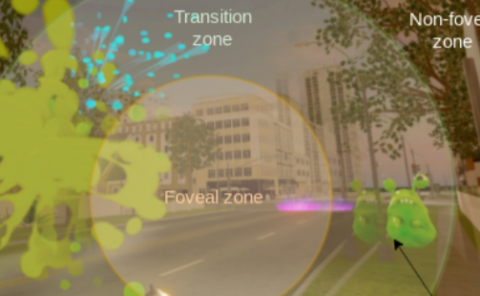Neurophysiological signatures of the body representation in the brain using Immersive Virtual Reality
Teams: Microsoft
Writers: Mar Gonzalez Franco
Publication date: December 2014
Abstract
Several studies have shown that it is possible to substitute a person’s body by a virtual one giving rise to illusions of ownership and agency with respect to the virtual body. The effects and traces of such body substitution can be measured using subjective reporting, behavioural and objective physiological measures. However, considerable work remains for uncovering the underlying neurological mechanisms that trigger those effects. In this thesis we aim to measure neurophysiological correlates of ownership and agency, and by doing so to contribute to a greater understanding of the functioning of the body representation in the brain. In order to address this question we carried out a series of studies where the representation of the human body and activity in which it was engaged were externally manipulated in various ways through multisensory stimulation, while measuring the corresponding electroencephalography (EEG) responses. Through this multisensory stimulation, healthy humans experienced full body ownership and agency illusions over virtual bodies – as if their real bodies were perceptually substituted by these bodies. Specifically, Virtual Reality (VR) was used to give participants an egocentric view of a co-located virtual body, using a Head-Mounted Display. They could move this body through real-time motion tracking thus providing synchronous visuo-motor stimulation. The combination of the first person perspective and synchronous visuo-motor stimulation resulted in full body ownership and agency illusions over the virtual body, which we refer to as virtual embodiment. Under these circumstances we then explored the implications of such bodily perceptual manipulations in the brain with EEG. A first study was intended to validate whether a virtual body can be effectively recognized as a feasible substitute to the self-body at the unconscious level. A motor cortex activation equivalent to what would be expected in a real scenario was found after exposing participants’ virtual body to harmful stimuli. This particular result provides a measure of response-as-if-real indicating that participants tended to accept their given virtual bodies as their own. In a second study, the consequences of the agency mechanisms that provide the sensation of control over our own body actions were explored through virtual embodiment. In this study participants underwent sporadic agency disruptions while performing rapid arm movements. In certain conditions, the virtual hand of participants moved autonomously in the opposite direction to the participants’ real hand. Results provide evidence of specific neural processes responsible for detecting externally induced agency disruptions. Moreover, these neural processes were correlated with the strength of the subjective embodiment illusion. This study was also aimed at widening current perspectives on agency schemas, proposing and demonstrating the existing theory of re-afferent and feedback error mechanisms that are concurrently functioning in the brain to detect agency disruptions. In a third study the implications of the external appearance of the substitute virtual body for self-recognition were explored. We designed an experiment in which healthy participants were exposed to self, familiar and unknown faces of look-alike avatars. Results showed shared underlying mechanisms for self-identification in real and virtual faces in the visual cortex. In particular, neurophysiological traces showed that virtual faces are classified as real faces – in contrast to what happens with the classification of other objects (cars, flowers, etc.). Furthermore, the visual cortex differentiated familiarity levels among virtual faces. These are novel insights contributing to the better understanding of why different looking avatars can have an impact on participants’ performance or behaviour, thus being useful both for the fields of virtual embodiment and of self-recognition. Overall the research in this thesis explores brain activity through EEG of the immediate experience of having and controlling a body. Empirical evidence is presented to validate the use of virtual reality for the research of the body representation in the brain. Additionally, novel neural signatures of the bodily perceptual manipulations are presented through a set of studies. Results are put into context with an in-depth review of literature on self-awareness, body perception, body ownership and agency theories at the beginning of this thesis



